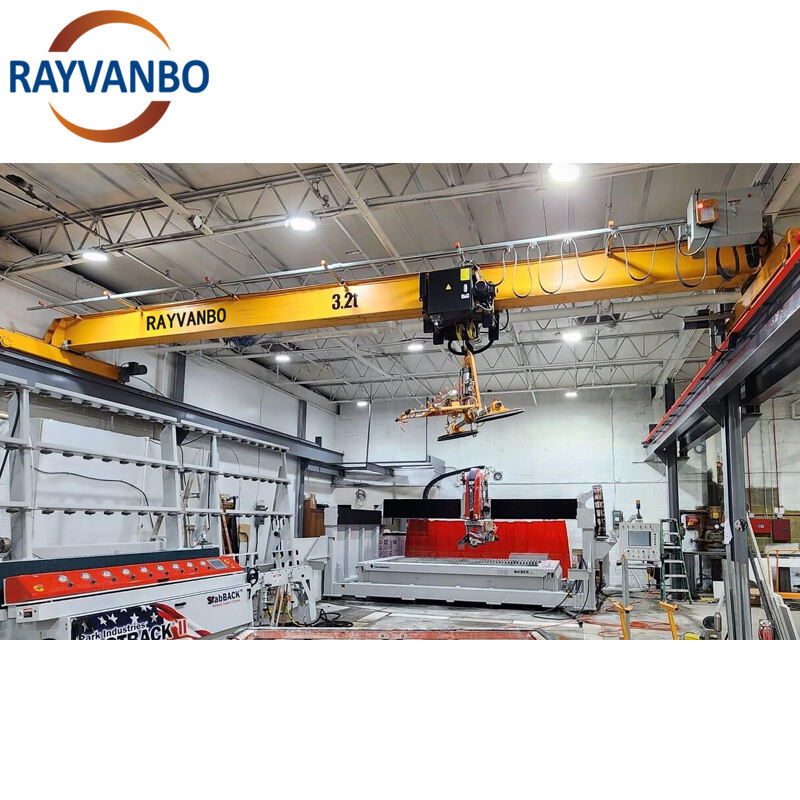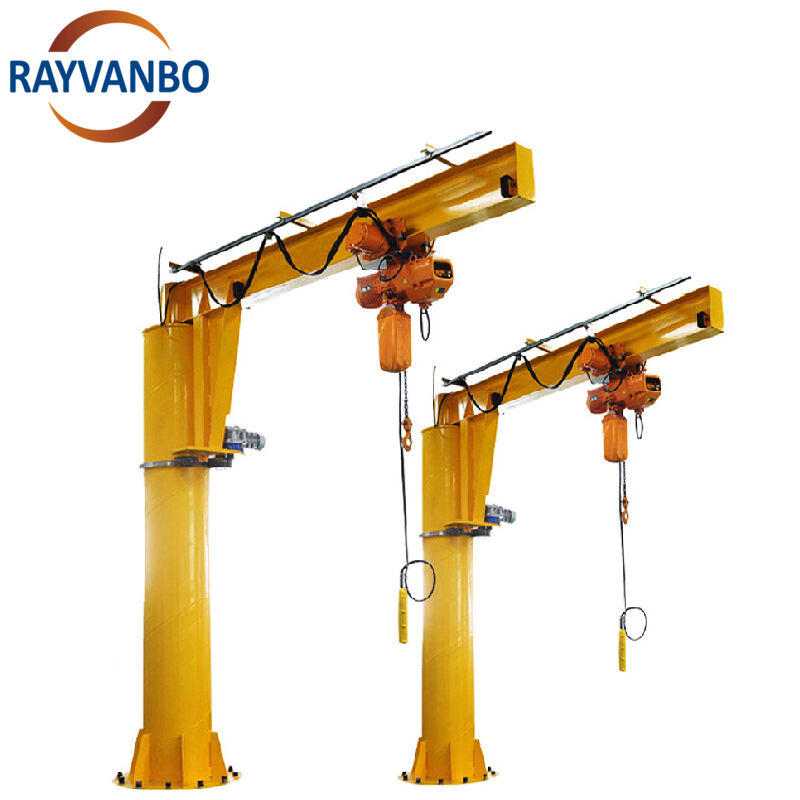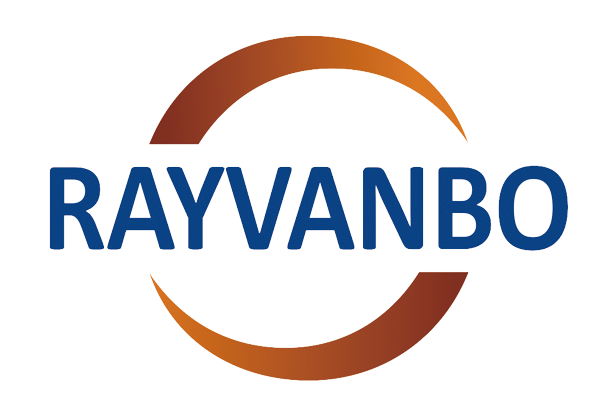Üstdən və JIB Krelları Arasında Konstruktiv Dizayn Fərqləri
 |
 |
Üstdən Kran Dəstək Sistemləri
Əksər körpü qaldırıcılar şaquli kolonlar tərəfindən dəstəklənən körpü kimi adlandırılan güclü dəstək konstruksiyalarına ehtiyac duyur. Bu dizayn ağır çəkilərin daşınmasında yaxşı işləyir və sənaye standartları tələbatdan asılı olaraq 10 tondan 100 tona qədər olan hər şeyi əhatə edir. Belə möhkəm konstruksiya müxtəlif sənaye sahələrində istifadə olunmasına imkan verir, xüsusilə çəki tutumunun ən önəmli olduğu böyük operasiyalarda yaxşıdır. Dəstək sistemləri hər bir iş yeri vəziyyətinə xüsusi olaraq hazırlanır və müxtəlif sektordan uyğunlaşdırıla bilər. Bina hündürlüyü, tavan hündürlüyü məhdudiyyətləri və gündəlik növbələr zamanı qaldırıcının istifadə tezliyi kimi amillər son dizayna təsir edən amillərdir. Şirkətlər xüsusi hazırlanmış qaldırıcı sistemlərinə investisiya etdikdə, gündəlik tapşırıqları təhlükəsiz şəkildə yerinə yetirən və məhsuldarlıq səviyyəsini yüksək saxlayan avadanlıqla qalırlar.
Wuhan Rayvanbo Import & Export Trade Co., Ltd. kran endustrisində başçılıq edən bir participantdır və üstü və JIB kranlarının geniş bir spektrini təklif edir. Onların dayanıqlı və effektiv kran sistemləri ilə müxtəlif endustriyal istifadələrə cavab verilir və təyin edilmiş həllərlə təmin edilir.
JIB Kran Pivot Mekaniki
JIB qaldırıcılarını fərqləndirən şey onların bazada mərkəzi pivot nöqtəsinə birləşdirilmiş döndərən qoludur və yükü ətrafda hərəkət etdirərkən onlara müstəsna hərəkət imkanı verir. Bu ağıllı dizayn sayəsində bu qaldırıcılar həm şaquli qaldırma, həm də yan tərəfə hərəkət etmə funksiyalarını yerinə yetirə bilir və xüsusilə döşəmə sahəsi məhdud olan workshoplarda əla yer qənaət etdirə bilir. Əksər standart modellər təxminən 5 ton çəkiyə qədər yükləri qaldıra bilir və müxtəlif sənaye sektorlarında çoxsaylı istehsal tapşırıqları üçün kifayət qədərdir. Onların pivotla işləməsi iş zamanı hər şeyi sabit saxlayır ki, bu da işçilər tərəfindən dar yerlərdə ağırlıqlı əşyaları dəqiq yerləşdirmək üçün qiymətləndirilir. Bir çox zavodlar iş stansiyaları arasında əlavə avadanlıq və ya işçilərə ehtiyac olmadan materialları sürətlə köçürmək üçün bu qaldırıcıları əvəzsiz hesab edir.
Hərəkət qabiliyyəti və quraşdırma tələbləri
Qaldırma qurğusunun hərəkətliliyi nəzərdə tutulan növündən asılıdır. JIB qaldırma qurğuları, ümumiyyətlə, daha sadə quraşdırma tələb edir və tavan qaldırma qurğularına nisbətən daha asanlıqla yerindən yerinə köçürülməyə imkan verir, çünki tavan qurğuları üçün mürəkkəb tənzimləmələr tələb olunur. Tavan sistemlərinin quraşdırılması zamanı şirkətlər çox vaxt tavan hündürlüyünü qiymətləndirmək və bütün obyektin planlaşdırılması üzərində işləmək üçün həftələrlə vaxt sərf edirlər ki, bu da bütün ehtiyacların düzgün ödənilməsini və kifayət qədər boşluğun mövcudluğunu təmin etsin. JIB modelləri o qədər də çox yer tutmur, buna görə də overhead variantları uyğun gəlməyən dar yerlərdə istifadə üçün əlverişlidir. Yük tutumuna və iş sahəsinə gəldikdə, JIB qaldırma qurğuları məhdud sahələrdə yüngül yükü daşımaqda üstünlük təşkil edir. Bu səbəbdən onlar təchizatın istehsal dövrləri ərzində bir yerədən digərinə köçürüldüyü workshop və istehsal mühitlərində xüsusilə faydalıdır. Müəssisələr üçün isə müxtəlif şöbələrdə dəyişən operativ tələblərə uyğun doğru qaldırma həllinin seçilməsi baxımından bu fərqləri başa düşmək vacibdir.
360° Dönmə Qütblü Qaldırıcılarda
Qütblü qaldırıcıların əslində fərqləndirdiyi şey, onların ətrafında tam dönməsi və beləliklə məkan məhdud olduqda belə əla örtüyü təmin etməsidir. Bu qaldırıcıların tamamilə fırlanması onları hərəkət etdirməyi çox asanlaşdırır, beləliklə işçilər maşının yerini dəyişməyə ehtiyac qalmadan müxtəlif yerlərə çatmaq üçün maşını daim tənzimləməli olmur. Əksər modellər təxminən on ilə iyirmi beş fut arasında dəyişən qol ilə gəlir, ancaq dəqiq ölçülər iş sahəsi üçün seçilmiş konfiqurasiyadan asılıdır. Şirkətlər bu qaldırıcıların nə qədər dönmə qabiliyyətinin olduğunu öyrəndikcə, iş yerlərini necə daha yaxşı təşkil edəcəklərini və gündəlik əməliyyatları necə təşkil edəcəklərini müəyyən etməyə kömək edir. Bu, əsasən daha böyük qaldırma avadanlıqları üçün yer olmayan yerlərdə xüsusilə vacibdir.
Üstündən Keçən Burun Örtüsü
Kranlar digər kranlardan daha böyük sahələri əhatə edir, bəzən yüzlərlə metrə çatır. Onlar işçilərin maneələr olmadan geniş girişə ehtiyacı olan böyük istehsal sahələrində ən yaxşı işləyir. Bu kranların nə qədər uzağa gedə biləcəyi əsasən iki faktordan asılıdır – əhatə etdiyi məsafə və əşyaları qaldıra bildiyi hündürlük. Bu da operatorların istehsalat sahəsinin mürəkkəb planlaşdırılması zamanı belə materialları effektiv şəkildə daşımağa imkan verir. Kranlar yer üzərində deyil, tavanlardan asıldığı üçün şirkətlər onları mövcud binalara yerləşdirə bilər və bu, qiymətli yer sahəsini tutmur. Bir çox istehsalçılar üçün bu tənzimləmə həm zavodlarda, həm də anbarlarda çıxarışın artırılmasına kömək edir, çünki yer sahəsi digər avadanlıqlar və işçilərin hərəkəti üçün azad olur.
Mövqeyi limitləmək
Tərəzi radiusu məhdudiyyətləri haqqında bilmək QOL və tavanüstü qaldırıcıların təhlükəsiz və səmərəli işlədilməsində ən vacib amildir. Xüsusilə QOL qaldırıcılar üçün həqiqi tərəzi radiusu, əsasən, qolun uzunluğundan və dönər nöqtənin yerləşdiyi yerdən asılıdır. Bu isə birbaşa materialların sıx iş sahələrində maneələrin qarşısından necə keçəcəyini təsir edir. Tavanüstü qaldırıcıların da öz tərəzi məhdudiyyətləri var, lakin ümumiyyətlə onlar bir neçə giriş nöqtəsi olan daha böyük sahələr üçün nəzərdə tutulub. Ağıllı şirkətlər qaldırıcıların düzülüşünü planlaşdırarkən bu tərəzi radiusu məlumatlarını nəzərə alırlar, çünki bu məsələni səhv həll etmək təhlükəli vəziyyətlərə və istehsalat sahələrində ciddi işgüzarlıqlara səbəb ola bilər.
Hər Qablaşdırıcı Növü üçün Mükafatlı Sənaye İstifadələri
Montaj Xəttində JIB Qablaşdırıcısı İstifadəsi
JIB kranlar materialların və komponentlərin daşınmasını sürətləndirdiyi üçün çoxsaylı montaj xətlərində əsas avadanlıqlara çevrilmişdir, bu da məhsuldarlığı əhəmiyyətli dərəcədə artırır. Bu kranlar gördükləri işə görə müxtəlif yükləri daşımaq üçün nəzərdə tutulmuşdur və istehsalat sahələrində və fabriklərdə alətləri və hissələri dəqiq istənilən yerə qaldırırlar. JIB kranların fərqləndiyi əsas xüsusiyyət onların kompakt ölçüləri və hərəkət etmə qabiliyyətidir və bu xüsusiyyət kiçik istehsalat sahələri və orta ölçülü istehsalat zonaları üçün əladır. Daha böyük körpü tipli sistemlərdən fərqli olaraq bu kranlar effektivliyini itirmədən dar yerlərdən maneəsiz keçid edə bilir və bu xüsusiyyət sahə menecerləri üçün məhdud sahədə lakin yüksək istehsalat səviyyəsini saxlamaq üçün əlverişlidir.
Anbarlıqda Üstündən Burunçlar
Anbar idarəçiliyində inventarın idarə edilməsi və ağır malların daşınmasında kranlar mühüm rol oynayır. Bu maşınlar işçilərin əlçatmaz yerlərdən əşyaları götürüb daşınmasını təmin etdiyindən işləri çox sürətləndirir. Bu kranların ən yaxşı cəhəti onlardır ki, onlar yer üzündə heç bir sahəni tutmur və eyni zamanda anbarın geniş sahələrini əhatə edir. Bu xüsusiyyət hər kvadrat metrin qiymətli olduğu məşğul obyektlər üçün xüsusilə vacibdir. Bir çox istehsalat müəssisələri və yayım mərkəzləri anbar sistemlərinin səlis işləməsini və müəssisənin müxtəlif hissələrində sifarişlərin səmərəli yerinə yetirilməsini təmin etmək üçün kranlardan istifadə edir.
Bina Sahələri Ssenaryuları
Qurğuşun texnologiyası inşaat sahələrində hər gün yaranan müxtəlif tələblərə cavab verməkdə əhəmiyyətli rol oynayır. Məsələn, yükü yuxarı-aşağı hərəkət etdirmək üçün istifadə olunan körpüver qaldırıcılar böyük sahələrdə işləri təhlükəsiz şəkildə və daha səmərəli aparmağa kömək edir. Bu iri maşınlar iş prosesinin daha hamar getməsinə və bütün əməliyyatların təhlükəsizliyinə təminat verir. Digər tərəfdən, məhdud sahələrdə əla iş görən xərçəngvari qaldırıcılar işçilərin yükü lazım olan yerə dəqiq yerləşdirməsinə imkan verir və əsassız çətin mövqelərlə mübarizlə əziyyət çəkmədən işləməyə kömək edir. Müasir inşaat layihələrinin çoxunda xərçəngvari və körpüver qaldırıcıların düzgün kombinasiyası təhlükəsiz iş şəraiti və daha qısa vaxtda işin yerinə yetirilməsini təmin edir. Buna görə də, müqavilə sahibləri bu qaldırma həllərini uğurlu tikinti planlarının əsas hissəsi kimi qəbul edirlər.
